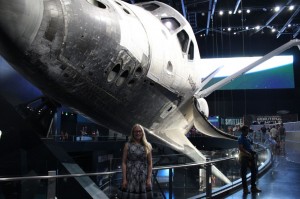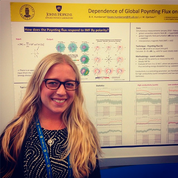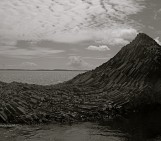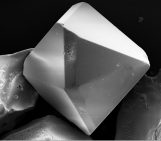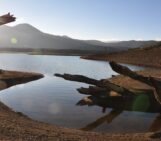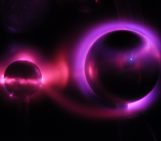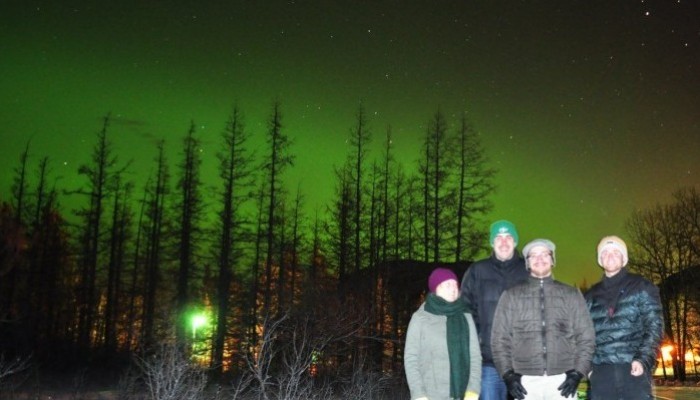
In this edition of Geotalk, the regular feature were we highlight the work and achievements of early career researchers, we are talking to Beate Humberset, the winner of the Outstanding Student Poster (OSP) Award for the Solar- Terrestrial Sciences Division (ST) in 2013. In addition, Beate is the Young Scientist Representative for the ST Division so we will also touch upon her responsibilities in this role.
First, could you introduce yourself Beate and tell us what it is you’ve been investigating as part of your PhD so far?
I am a physicist and Ph.D. candidate at the Birkeland Centre for Space Science at the University of Bergen. I come from the West Coast of Norway, from a place called Ørsta in Sunnmøre, that the last few years has started to be known for its majestic peaks which support great mountain hiking and off-piste skiing. This was also the place where my interest in physics started, when I discovered it at high school; since then my interest in the subject has grown driven by curiosity and an interest in understanding natural phenomenon. I moved to Bergen, the next biggest city in Norway, to study physics. Whilst studying for my bachelor and master degrees I worked at Bergen Science Centre and got interested in science outreach. In April this year I moved back after a memorable 9 months research stay as a Fulbright Scholar at the Johns Hopkins University, Applied Physics Laboratory outside Washington DC.
My research is on understanding and describing the dynamic response of Earth’s complex coupling to space. The motivation for this study is that much of our understanding of the coupling between the Earth and the near space comes from empirical modelling of various electrodynamic parameters, such as Birkeland currents. Birkeland currents are electrical currents flowing along the magnetic field between near space and Earth’s polar atmosphere. They are often assumed to be two fairly static upward and downward current sheets encircling Earth’s magnetic poles. This is a model that in many cases works well, but in reality the Birkeland currents are highly dynamic, which is something we do not understand as well as we would like to.
The main reason for this shortcoming is that most means of making measurements in space rely on single satellites, which are in constant motion, meaning that it is difficult to decide if the phenomenona we measure have changed during our measurements and how it has changed. So far, during my PhD project I have mostly been working to defeat this shortcoming and describe the dynamic behaviour of the energy transport into Earth’s polar atmosphere by finding the characteristic behaviour of auroral emissions.
After EGU 2013, you received an Outstanding Student Poster Award for your work on finding the characteristics of pulsating aurora. This certainly sounds like a challenging project! Could you tell us a bit more about pulsating aurora and why characterising them is important?
The aurora are the result of the energy in the solar wind entering Earth’s magnetic field. Some of this energy causes charged particles to precipitate in an oval around Earth’s magnetic poles. When they reach altitudes of 500 to 90 km they collide with the atmosphere, which emits the light that we see as aurora. Therefore, the auroras are a mirror of the invisible energisation processes that happens further from Earth and are a great source of knowledge. Different processes lead to different kinds of aurora. The pulsating aurora are a phenomenona which change rapidly both temporally and spatially and which recently have been shown to be much more widespread and persistent than what was thought before, and thus are more important to the near Earth space. However, it is still debated what the underlying processes that generate them are, and also if there are more than one type of pulsating aurora. The definition of pulsating aurora is broad and covers patches, arcs and arc segments from tens to several tens of km that have a periodic, quasi-periodic or variable temporal variation from 1 s to tens of seconds. You can normally see them appear after the bright discrete aurora has passed, as quite a messy sight of dim patches of different shapes, all pulsating in a variable manner and different from each other. We have therefore investigated the spatiotemporal characteristics of pulsating auroral patches to provide better observational constrains for the various proposed mechanisms.
Aurora seen from above: This video was taken from the International space station. It shows the discrete aurora that most of us are familiar with, and if you look carefully to the south of that (left in the movie) we can also see the dim pulsating aurora. Video credit: NASA. Visit the NASA website for more information about the features seen in the video.
Say I wanted to find the characteristics of pulsating aurora, how might I go about it?
First you have an excellent tool in all-sky imagers than can capture about 1000 by 1000 km of the night sky where the aurora is emitted. You can think of an all-sky movie as several multipoint measurements of the aurora meaning that you have full control over how it changes in space and time. In this way you can describe its shape, persistency, temporal behavior, spatial behavior and how they are coupled and vary with the energy being dissipated. This can again be used in the work to untangle the process or possibly several processes that together or in different locations cause the pulsating aurora.
What inspired you to attend the General Assembly (GA) in 2013 and present your work there?
It has been a tradition in our research group that if master students show good progress in their project, they get to travel to the GA in Vienna to present their research and experience how it is to be at a large conference and is shown a different side of what it is like to be a researcher. I was there for the first time in 2009, which made a huge impression on me. I was therefore glad I had the funding to travel there for the 2013 GA. In the few years I’ve had the chance to attend the GA, I have witnessed how the conference, in addition to be a good place where graduate student can be heard, has also become a place where useful workshops and designated mingling areas have brought attention to young and early career scientists.
What was your highlight of the 2013 General Assembly?
I must say it has been a while, but I remember that I found it fun to present my poster and got a few very inspiring discussions going thanks to interested senior scientists stopping by.
What comes next for you in terms of your research, but also going forward in your career?
In the future I will continue research on how and if abrupt changes in the polarity of the East-West component of the interplanetary magnetic field, (which is known to not change the total energy input to Earth), influences the transport of electromagnetic energy to the atmosphere. It would be great fun to continue research after my PhD project has ended, but I have an open mind. In my opinion, being a physicist, there are lots of interesting possibilities career wise.
What does your role as the Young Scientist Representative for ST division involve?
I am the first Young Scientist (YS) Representative in the ST division, starting this year, and so have had the opportunity to shape what the role involves. Basically it is to ensure that interests of the YS in Solar Terrestrial (ST) sciences are taken care of in the EGU, especially during the GA. Through meetings with other division’s YS representatives we share experiences and make suggestions of how the EGU can improve the representation of the YS community, for example: how poster session can be better promoted, how to improve the short courses at the GA and highlighted the importance of travel support and awards. For the 2015 GA I am planning a short course for the ST students and early career scientists and an informal get together to improve networking and hopefully get some questions, comments or ideas to work on for next year.
If you are planning on coming along to the General Assembly in Vienna next April, once the programme has been finalised, head over to the website were sessions, short courses and meetings that have a strong YS focus will be highlighted. You can also check the website for more details on how you can participate in the Outstanding Student Poster Award , which is open to students of all levels(undergraduate through to PhD) participating at the GA. If you’d like more information on how to apply for financial support to travel to Vienna and present your research, this blog post summarises everything you need to know; but hurry, the deadline for abstract submission is the 28th November 2014.
Finally, if Beate’s interview has inspired you to become more involved with the EGU, there are plenty of volunteering opportunities and there are two divisions currently looking for YS Representatives, could you take on the job?

